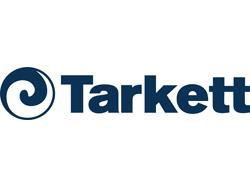Tarkett Releases 2020 Sustainability Report
Paris, France, April 9, 2021-Tarkett has released its 2020 Corporate Social & Environmental Responsibility (CSR) report. Fully audited by KPMG, this report showcases the company’s ongoing sustainability performance.
“In the last ten years, we have achieved strong progress in sustainability. In many cases we have exceeded our 2020 objectives, developing circular economy initiatives, reducing our carbon footprint and eco-designing our products with healthy materials”, says CEO Fabrice Barthélemy. “Opening a second chapter in its sustainability strategy, Tarkett is leading the way in its industry. As part of our change to win strategy, we invest in circular economy, and tackle our carbon footprint across the value chain. By building cohesive partnerships with customers, suppliers and leading players, we amplify our impact making conscious choices for people and the planet. This approach will allow us to seize new opportunities of sustainable growth, and contribute to a global green recovery for present and future generations.”
Tarkett’s maturity in sustainability has been recently recognized by improved extra-financial ratings, both from the Carbon Disclosure Project (CDP climate rating: B – management level) and EcoVadis (platinum medal, the highest level of maturity in sustainability a company can reach).
Tarkett ramps up its recycling program, by transforming end-of-use flooring and recycled materials into new floors, ultimately reducing waste and carbon footprint.
- 109,000 tons of flooring were collected between 2010 and 2020 as part of its Restart take-back and recycling program in Europe, North America and Brazil.
- Nine recycling centers integrated into its production sites in eight countries are up and running.
- 13% of its raw materials (127,000 tons per year) are recycled materials in 2020. Its goal is to reach 30% by 2030, versus 10% in 2018.
Tarkett reduces its carbon footprint.
- Tarkett decreased its greenhouse gas emissions by -27% between 2010 and 2020, going beyond its initial objective of -20%. The goal for 2030 is to reduce its carbon footprint by 30%.
- Eight production sites in seven countries are sourcing 100% renewable electricity.
- In 2020, it launched iQ Natural, one of the lowest carbon footprint resilient flooring solutions on the market.
- It avoided 253,000 tons of C02e along the value chain (scope 3) thanks to the use of 127,000 tons of recycled materials, instead of using virgin raw materials and sending waste to incineration. This represents more than the total amount of greenhouse gas emissions of its production sites in 2020 (198,500 tons of C02e – Scope 1&2).
Tarkett selects good materials as part its eco-design approach.
- Since 2010, it is partnering with the scientific institute EPEA to apply Cradle to Cradle (C2C) principles throughout its activities. Now, 98% of its raw materials-representing more than 5,000 materials-are third-party assessed for their impact on people’s health and the environment based on Cradle to Cradle criteria (C2C).
- Tarkett has twenty Cradle-to-Cradle certifications, covering a wide range of product categories, including carpet, linoleum, rubber, wood, and artificial turfs (2020). Five product collections have reached the Gold level, the most in the flooring sector.
Related Topics:Tarkett
